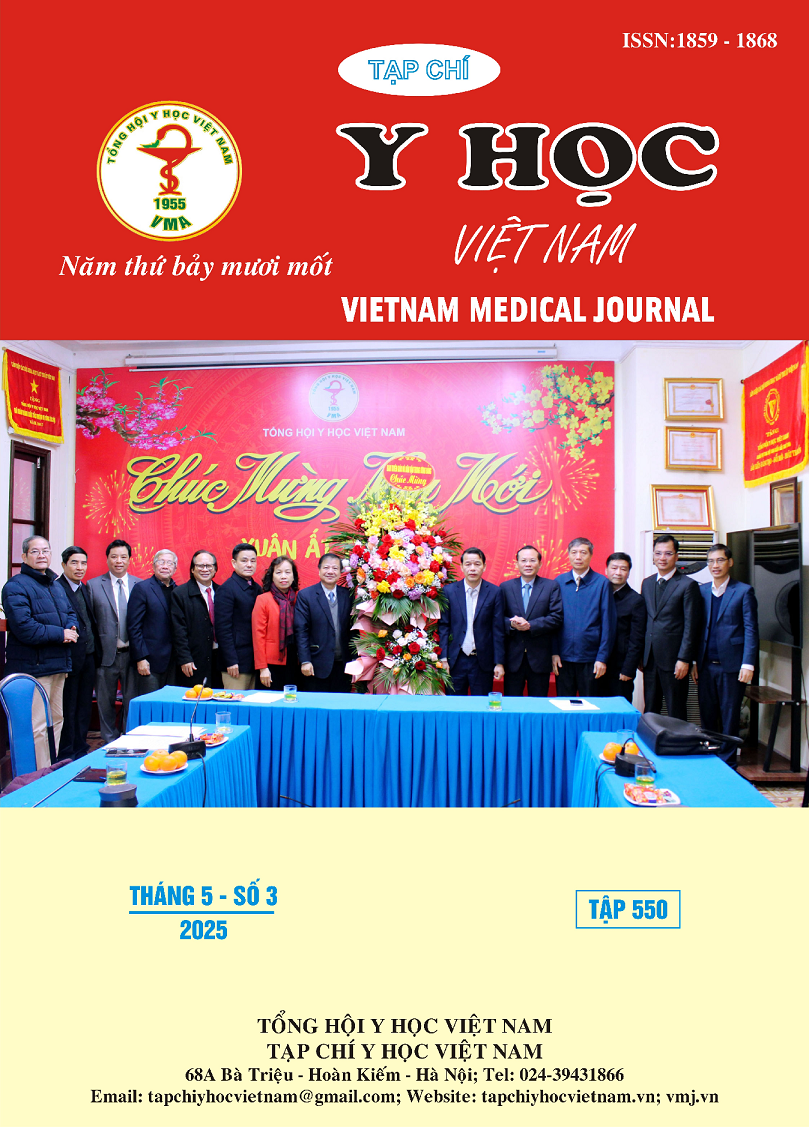SOME FACTORS ASSOCIATED WITH AND THE CONSEQUENCES OF HIGH-SENSITIVITY TROPONIN I ELEVATION IN SEPTIC SHOCK
Main Article Content
Abstract
Introduction: The factors associated with and the consequences of elevated high-sensitivity troponin I (hs-TnI) levels in septic shock remain unclear. Objectives: To investigate common factors associated with hs-TnI elevation and its relationship with clinical outcomes in patients with septic shock. Methods: A cross-sectional descriptive study was conducted on 136 patients diagnosed with septic shock based on the Sepsis-3 definition, admitted to the Intensive Care Unit of Hoan My Cuu Long Hospital from January 2023 to October 2024. Results: The prevalence of hs-TnI elevation at diagnosis was 61% after gender adjustment, with a median level of 36 ng/L (interquartile range: 10.0 – 175.9). Factors associated with hs-TnI elevation included positive blood cultures, SOFA score at diagnosis, serum procalcitonin, and hemoglobin levels. In multivariate analysis, serum procalcitonin remained significantly associated with hs-TnI elevation (OR = 1.005, 95% CI: 1.001 – 1.010, p = 0.020). hs-TnI elevation was associated with an increased rate of mechanical ventilation (56.6% vs. 32.1%, p = 0.009), higher in-hospital mortality (41% vs. 22.6%, p = 0.044), and higher 30-day mortality (48.2% vs. 28.3%, p = 0.034). Conclusion: Serum procalcitonin is a factor associated with hs-TnI elevation in patients with septic shock in multivariate analysis. Elevated hs-TnI levels are associated to increased mechanical ventilation requirements and higher mortality rates.
Article Details
Keywords
high-sensitivity troponin I elevation, septic shock
References
2. McGrade P, Jones C, Haneke T, et al. Characteristics and Outcomes of Hospitalized Patients Undergoing Troponin Testing. ARC Journal of Cardiology. 2024;9:01-04. https://doi. org/10.20431/2455-5991.0901001
3. Garcia MA, Bosch NA, Peltan ID, Walkey AJ. Variation in Troponin I Measurement and the Cardiovascular Management Approach Following Elevated Troponin I Among Critically Ill Patients With Sepsis. Crit Care Explor. 2023;5(1):e0842. DOI:10.1097/CCE.0000000000000842
4. Garcia MA, Rucci JM, Thai KK, et al. Association between Troponin I Levels during Sepsis and Postsepsis Cardiovascular Complications. Am J Respir Crit Care Med. 2021; 204(5): 557-565. DOI:10.1164/rccm.202103-0613OC
5. Vallabhajosyula S, Sakhuja A, Geske JB, et al. Role of Admission Troponin-T and Serial Troponin-T Testing in Predicting Outcomes in Severe Sepsis and Septic Shock. J Am Heart Assoc. 2017;6(9). DOI:10.1161/JAHA.117.005930
6. Zheng P, Wang X, Guo T, et al. Cardiac troponin as a prognosticator of mortality in patients with sepsis: A systematic review and meta-analysis. Immun Inflamm Dis. 2023; 11(9):e1014. DOI:10.1002/iid3.1014
7. Zochios V, Valchanov K. Raised cardiac troponin in intensive care patients with sepsis, in the absence of angiographically documented coronary artery disease: A systematic review. J Intensive Care Soc. 2015;16(1):52-57. DOI:10. 1177/1751143714555303
8. Singer M, Deutschman CS, Seymour CW, et al. The Third International Consensus Definitions for Sepsis and Septic Shock (Sepsis-3). Jama. 2016; 315(8): 801-810. DOI:10.1001/jama. 2016.0287
9. ver Elst KM, Spapen HD, Nguyen DN, Garbar C, Huyghens LP, Gorus FK. Cardiac troponins I and T are biological markers of left ventricular dysfunction in septic shock. Clin Chem. 2000; 46(5):650-657.
10. Phan Đăng Hải. Nghiên cứu Giá trị Tiên lượng tử vong của Troponin T độ nhạy cao ở bệnh nhân nhiễm khuẩn huyết. Journal of 108 - Clinical Medicine and Phamarcy. 2021;16(DB4):54-58. https://doi.org/10.52389/ydls.v16iDB4.924


